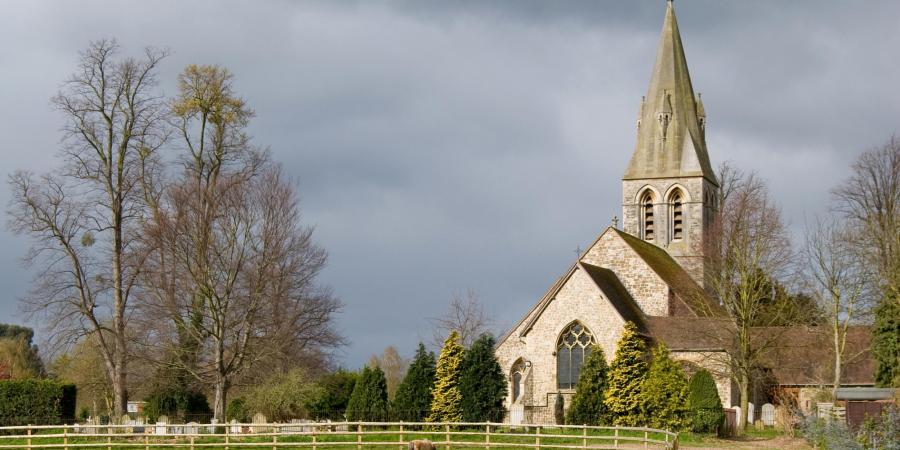Our first ever excavation as the newly-formed Wessex Archaeological Committee (which went on to become Wessex Archaeology) was at Wraysbury in 1979. It proved a relatively typical archaeological site, similar to many of the subsequent archaeological investigations undertaken throughout our 40 year history. But looking back at where we started offers an interesting insight into the first steps for Wessex Archaeology, and the commercial archaeology sector, in successfully adapting to major changes in funding and legislation throughout the years.
Why was it significant?
The excavation, ‘W1’, was a site funded by Historic England and Berkshire County Council at Wraysbury, a small village between Windsor and Staines. The project was a sampling excavation of Bronze Age, Roman and late Saxon/early Medieval settlement near the parish church, Wraysbury St Andrews.
Archaeologists from several units had been involved in previous excavations in the area prior to the formation of the Wessex Archaeological Committee (WAC). This was the initial excavation undertaken by the WAC; an archaeological committee formed of a collection of regional archaeologists in the Wessex area, using funding apportioned by the Inspectorate of Ancient Monuments (now Historic England).
The excavation was significant in that it was the first that was undertaken at this crucial juncture in what became Wessex Archaeology’s history, when several units that were previously operating independently were required by the changes in funding and local administration to work collectively.
“Wraysbury marked an important stepping stone for the organisation and the evolution of professional archaeology. At the time, I was an archaeologist in Wiltshire and the WAC amalgamated a group of similar people into one body which could work more effectively. From this launch pad, WAC evolved into the Trust for Wessex Archaeology, which ultimately became Wessex Archaeology.”
Dr Phil Harding, Wessex Archaeology
Our approach to the site
The principle aim of the excavation was to examine the economic and environmental of the site, with less emphasis placed on recovering a detailed settlement plan. To this end, ten 8m squares, aligned on the National Grid, were excavated. Two of these were extended to obtain further evidence of structural detail.
A relatively experimental approach was taken to wet sieve a sizable percentage of the excavation. At the time, this was a technique that was seen to have significant benefits in the retention and analysis of archaeological material.
Archaeological results
The excavations revealed evidence of human occupation in the area since prehistory, with peripheral evidence found close to the church suggesting that the site of the earliest settlement was located directly beneath the current building.
The site was used extensively throughout the Bronze Age and into the Romano-British period; excavations uncovered a mixed pattern of ditched enclosures and trackways from both periods, showing consistent and prolonged use for agricultural activity. The dating of these features was initially ambiguous, and faunal remains provided through extensive sieving work was a key method of assigning features to specific time periods. There was little evidence of any settlement from this period, more likely that there would have been a local settlement quite close to the excavation site. The Saxon occupation was represented by several ditches and artefactual remains.
Finds from the excavation included an Anglo-Saxon silver disk cross, which was a unique object at the time due to both of its sides being decorated – although the design is similar to several other crosses found of a similar date. This unique morphology with a recognised design helped expand the catalogue of Anglo-Saxon metalworking.
Wider outcomes
The evidence from the excavation led to further understanding of the environment and landscape usage around Wraysbury. Whilst the main dating evidence is based on pottery, the environmental evidence found via the wet sieving provided further evidence of the settlement and the purposes of its occupation. Further radiocarbon dating evidence led to an increased knowledge of the chronology of occupation.
The use of extensive wet sieving was a learning curve for the organisation. Initially, the aim was to sieve 100% of the deposits on site. However, it soon became clear that this was unfeasible, both in terms of time, budget and manpower needed to carry it out. The team adapted to this by decreasing the amount of wet sieving to between 12.5% – 25% and replacing the remainder with a sampling strategy. This informed the design and mitigation work of further excavations and construction in the area.
These simple beginnings are significant, not just for the archaeological results, but for providing the embryonic roots of Wessex Archaeology. Techniques and standards have improved, but archaeology remains at the heart of the organisation.
By Caroline Budd, Chief Operating Officer

